PWC Riding and Turning Techniques
Riding school is in session
Back in the heyday of the standup PWC, articles on riding tips and technique were common. Today, it’s a rarity to see any suggestions on how to better take a corner, or accelerate out of the hole. Why? Because many people make the mistaken assumption that all a sit-down craft requires is a body in the seat and a hand on the throttle.
And while that approach certainly gets the basic job done, to truly excel as a rider there are still tips and techniques that can make you better, and allow you to get the most out of your machine.
School’s in session…
Tip #1: Don’t stay put in the seat
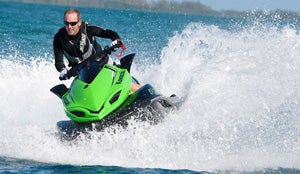 To get the most out of your PWC you need to use your body.
To get the most out of your PWC you need to use your body.On the contrary, a skilled rider will be almost constantly moving about, shifting their weight to one side of the craft or the other to keep the hull hooked to the water. Practice makes perfect, and hulls differ significantly. Try a little inside lean; today’s craft mostly avoid the extreme outside pressure once required to keep the hull flat and hooked to the water. Still, some outside weight is usually required. Experiment with keeping your inside leg forward in the footwell, and planting your outside foot where it can exert some pressure towards the stern. Many riders find this technique works well, switching which leg is forward depending on the direction of the turn.
Tip #2: Know your craft
Fine-tuning that style depends on your craft. Boats like Sea-Doo’s new RXP-X reward a relatively severe inside lean. Meanwhile, others like Yamaha’s VXR still want a little of that outside pressure to really hook the aft end of the boat through a turn. Even your sponsons can make a difference. If they’re adjustable, lower them for the most severe handling. If you don’t want your ride so aggressive, raise them to a higher position to loosen up the stern and have a more forgiving ride.
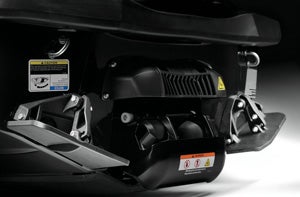 Adjustable trim tabs like on the new Sea-Doo RXT-X aS can make a huge difference in the handling characteristics of your PWC.
Adjustable trim tabs like on the new Sea-Doo RXT-X aS can make a huge difference in the handling characteristics of your PWC.Tip #3: Use proper trim
Not all craft have trim, but if it’s available, use it to your advantage. Trimming the nozzle down will help keep the bow low, ideal for jumping out of the hole from a dead start for quick acceleration. Once on plane, raising that bow will likely pay dividends. It puts less hull in the water, increasing top-end speed. A higher trim will also prove better in rough conditions, keeping the bow from burying itself amongst the waves, and resulting in a drier ride in the process.
Tip #4: Don’t sit…stand
As well as throwing your weight around, get off the seat occasionally as well. Standing, leaning forward over the handlebars, is the best way to keep the bow low when accelerating on a really powerful boat. Try keeping your feet planted back in the tray to stay put. Standing is also the obvious solution to enduring a rough ride. Your legs are stronger, and can take much more of the shock, giving your back a break.
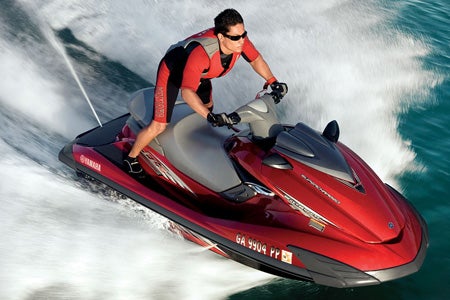 Not only does standing up lessen the strain on your back, but it gives you even more control of your PWC.
Not only does standing up lessen the strain on your back, but it gives you even more control of your PWC.Tip #5: Chop the throttle when entering a turn
Most PWC steer best when you can plant the bow in anticipation of a turn. When approaching a turn, or buoy, let off the throttle for a split-second to “plant” the bow, then get back on the throttle to power on through. More of the hull in the water will allow the boat to turn better…and quicker.
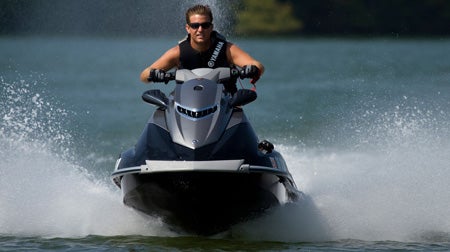 Before entering a turn try chopping the throttle to help plant the bow.
Before entering a turn try chopping the throttle to help plant the bow.Related Reading
Learn How To Wakeskate Behind A PWC
How To Ride a PWC with a Child
How to Ride a Stand-up PWC
PWC 101: Handling
Teaching Kids to Ski Behind a PWC
Get PersonalWatercraft.com in your Inbox!
Like PersonalWatercraft.com on Facebook
Comments
Most Popular

Remembering the Sea-Doo XP

2025 Yamaha JetBlaster PRO 2-Up Review

2024 Yamaha GP HO Review

2024 Kawasaki Jet Ski STX 160X Review

2017 Kawasaki Jet Ski Ultra 310LX Review
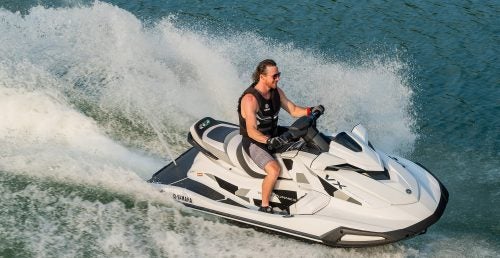










 Your Privacy Choices
Your Privacy Choices